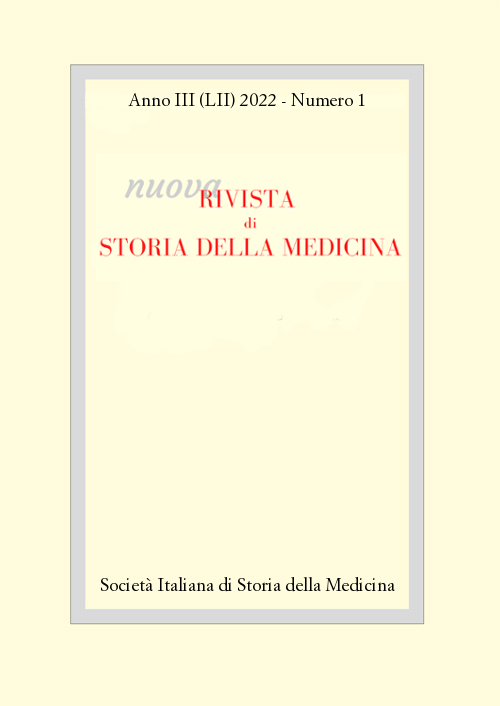I Teatri anatomici di Bologna Parte II.
Dal Medioevo al 1637
DOI:
https://doi.org/10.13135/2724-4954/6415Parole chiave:
anatomia, teatri anatomici, medicina, Bologna, storia, scienza, arte, Medioevo, Umanesimo, RinascimentoAbstract
La realizzazione del teatro dell’Archiginnasio, avvenuta nel 1637, segna un punto di svolta nella pratica anatomica della città di Bologna. Questa costruzione diventa un luogo di scienza e, allo stesso tempo, un simbolo e uno spazio ceri-moniale dove, seguendo precisi rituali, il corpo docente si ritrova non solo per insegnare, ma anche per ostentare il proprio ruolo all’interno della città e davanti ai rappresentanti politici. Prima dell’inaugurazione di questa sede ufficiale, l’anatomia felsinea ha già alle spalle più di tre secoli di vita, durante i quali le dissezioni sono avvenute in luoghi differenti, che si sono sviluppati in parallelo all’evoluzione della medicina e alla storia del teatro. Arte, scienza e cultura hanno intrecciato i loro potenziali in un percorso che dal Medioevo passa per l’Umanesimo e il Rinascimento, concludendosi infine nella seicentesca sala barocca. I teatri anatomici precedenti a questa sono andati distrutti, anche perché la maggior parte non era progettata per durare. Possiamo ricostruirli però attraverso testimonianze, immagini e documenti che raccontano la complessità dell’anatomia bolognese. Nel presente articolo ripercorro questa storia, par-tendo dalle prime sperimentazioni in stanze semplici, arrivando alla costruzione dei teatri temporanei fino al primo teatro anatomico dell’Archiginnasio, precedente a quello del 1637. È molto difficile tracciare esattamente la forma e la collocazione dei teatri scomparsi, quindi la mia attenzione sarà focalizzata maggiormente sulla loro localizzazione urbana e sul rapporto con la città circostante, in un viaggio che comprende più di tre secoli di storia.



